Since the very beginning of the distributed and engaged rumiverse, there have been movements — almost all by individuals — to catalogue all rums in existence. All of them came up short, failed, or were abandoned…though many, in hindsight, pointed to the desirable characteristics of some as-yet undeveloped system and encouraged the next generation of creators. Yet perhaps now we are on the edge of cracking the problem. This two part essay charts the beginnings of such projects, why they are important, and where it all seems to be leading.
For rum deep divers, researchers, auction houses, the curious, the writers, the inheritors of dusty bottles, for all these people and more, a good rum database – a listing of rums – is now needed more than ever before. A good database or website that catalogues rums would not only have technical details – producer, bottler, source material, distillation notes, dates, strength, age, additives, country or city or company of origin and so on – but link to secondary and tertiary sources, provide label photographs, list online review sites, available shopping sites, and have commentary. In today’s world where questions asking about this or that rum pop up all the time and with ever-increasing frequency, the importance of such a database cannot be casually dismissed. It can be used to gauge value, chart trends and identify purchases, if for no other reasons, but for me it’s because I know something of the simple human compulsion to just know.
Moreover, my own researches into company histories and the Rumaniacs Project showed that sometimes the bottlers themselves are no longer in business and so there’s nobody who can shed light on a bottle being queried; worse, in some cases existing companies themselves kept no records of what the hell they did. There was a Cadenhead rum bottled in 2003 which was practically unknown, to give one example; the SMWS’s lack of a list of the rums they themselves had issued was another, and I can assure you that almost no old rum-making company anywhere in the world has records of all its bottlings, blends, label changes or even marks – such things were either never deemed of great importance or simply left forgotten and unrecorded.
Books
There was a time less than a generation ago, when books were all we got, and we were grateful. Though not specifically created with the aim of compiling lists or catalogues except as an incidental by product of their researches, they immeasurably aided in such efforts. It was considered, with a kind of endearing innocence, a fairly easy task in the pre-Renaissance and pre-Internet era when most people knew at least something about Caribbean and Latin rums but rarely ventured further afield. Local rums in other lands and climes stayed local and developed their own national character, and at best it was world fairs and occasional newspaper articles over the last hundred years that allowed more knowledge to disseminate. Nobody ever really tried to collate or tie together the world of rum into a cohesive whole.
That said, these early books, when (or if) they made lists of rums at all, concentrated on geographical areas for the most part, and tried to gather some knowledge together with what limited information was then available. Excellent as they were in moving the subject of rums forward in the greater perception of the drinking world, however, they had several drawbacks.
For instance, the absence of reference or supplementary materials made it necessary for authors to do primary research, in person. Rum lacked the cachet of wine and whisky, where print magazines and newspapers had on-staff critics who were sent on the tab to major wine- and whisky-producing regions to taste, interview and record: in stark contrast, aspiring rum writers were a solitary bunch working in obscurity, and they had to travel and research and experience rums on their own dime. Unsurprisingly, therefore, they stayed within the confines of the regions with which they came from and which were accessible, primarily the Americas and the Caribbean; and they ignored the rich pickings to be held in other parts of the world (a weakness which continues to this day).
Moreover, by the time any book was written and then proofed, sent to printers and distributed, it was often already overtaken by new releases, and if not, became so within a year or two. Once printed they were locked, and so they dated fast. At the time, the majority of the rum market consisted of a sea of blends (only occasionally re-released, re-branded, or reformulated), and the era of multiple annual releases by a host of independent bottlers or multitudinous monthly batches by micro-distilleries, had yet to arrive: but, even with this slower pace of rum releases, no book could ever really stay current.
Ed Hamilton’s Rums of the Eastern Caribbean and Complete Guide to Rum from the 1990s — both based on his extensive travels and distillery visits in the region — have long since become almost obsolete (thought retain much usefulness as snapshots in time), and even a more recent book like Martin Cate’s Smuggler’s Cove has a rum list that is at best representative, and is approaching its sell-by date as new rums and distilleries emerge on the stage. Other recent books like the French language Le Guide Hachette des Rhums (The Hachette Rum Guide) with originally 400 and now 550 entries, or Alexandre Vingtier’s more modest effort 120 Rhums are useful additions, but unless updated, will suffer similar fates. And the multi-kilo double-tome of the recently printed Caroni distillery history and its bottlings will surely have to have a companion volume to account for all the releases that will be made after 2022.
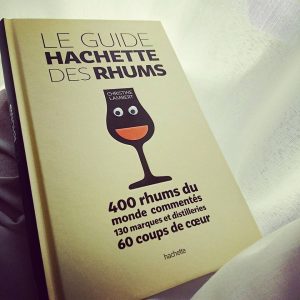 The original Encyclopaedia Britannica tried to address the same issue by printing annual yearbooks where they updated the content as best they were able. But aside from the Hachette guide, the writers of books on rum never went that far (and let’s be honest, why should they?) – they rested on their laurels as published authors and moved on to other projects. Even something as potentially useful as a summary-form Rum Bible (an equivalent to Murray’s work on whisky) was never written, because nobody was in a position to taste the hundreds and thousands of rums such a book would entail, even assuming they were known or available for tasting. In any case, any rum lists included by the various established authors were seen as adjuncts or extensions to their main work of description, story telling and historical recollection — not the primary focus of the work itself.
The original Encyclopaedia Britannica tried to address the same issue by printing annual yearbooks where they updated the content as best they were able. But aside from the Hachette guide, the writers of books on rum never went that far (and let’s be honest, why should they?) – they rested on their laurels as published authors and moved on to other projects. Even something as potentially useful as a summary-form Rum Bible (an equivalent to Murray’s work on whisky) was never written, because nobody was in a position to taste the hundreds and thousands of rums such a book would entail, even assuming they were known or available for tasting. In any case, any rum lists included by the various established authors were seen as adjuncts or extensions to their main work of description, story telling and historical recollection — not the primary focus of the work itself.
Things started to change with the advent of the internet and the rise of enthusiast driven weblogs, which started around 2007. Most of the early efforts in this direction were rum reviews, and sites like Refined Vices, Rum Reviews, El Machete and others stuck with this formula until they went dark and were replaced by yet others doing the same thing. Websites were and almost always are, run by individuals, and such initial forays into the online world came from this pool of enthusiasts who did their best to create, as best they could, a repository of the rums they had tasted. Few went further, though some certainly did take it to the next level – and such sites often dispensed with the whole reviewing gig altogether, perhaps as they had to.

Ed Hamilton’s Ministry of Rum Website
Possibly the most influential of the early rum-focused websites, the Ministry of Rum was launched in 1995 at a time when usenet groups and dial-up bulletin boards dominated the online space and user interaction. Windows 95 debuted that year and the Netscape Navigator had only been released the year before and the internet was a wasteland of disparate websites only gradually finding their way. Easy-to-use website builders like WordPress and SquareSpace were far in the future and Ed hired a programmer to create his website. He added a discussion forum for users, wrote some commentaries, added some articles, but for the purpose of this essay, it was his brief country distillery listings and the rums these distilleries produced which is of note. When I researched the early reviews of my own, it was often the Ministry that provided the first core data points of a rum’s origin, stills, strength, company background and other products they made. Sadly the site is moribund and most of the links no longer work, and there was never any structured table listing one could consult, so I actually have no idea how many rums were under the hood.
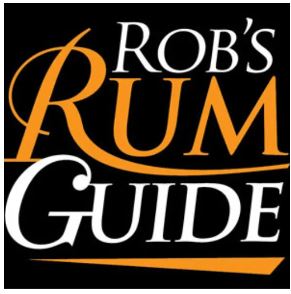 The Burrs: Rob’s Rum Guide, Ultimate Rum Guide, et al
The Burrs: Rob’s Rum Guide, Ultimate Rum Guide, et al
This is what led to one of the earliest websites that tried to capitalise on the burgeoning rum scene of the late 2000s and early 2010s: the Burrs’ Rob’s Rum site, and the associated list of rums which topped out at 622 items (but which lacked many of the minimum provided details we now take for granted). The site was part of an overall multi-channel effort that tied into their various commercial enterprises, especially the Miami Rum Renaissance (which at one time was the premiere North American rum event). Their Ultimate Rum Guide (now offline, and ported to Instagram) was another offshoot of this approach and listed some rums and provided brief details. Unfortunately it was never scaled up or maintained, ignored far too many rums, was limited in geography, and I don’t think it’s been updated in a while. The efforts of the Burrs have been redirected to the American Rum Index, the Rum Minute (60-second tasting notes on You Tube) and other businesses in which they are involved. So the whole database “project” (and it never really was anything so structured or grandiose) really didn’t go anywhere and died for lack of oxygen.
Taster’s Guide
Another attempt which was much more serious was the (now defunct) site of Taster’s Guide, created around 2010 by a longtime correspondent of mine named Stefan Hartvigson from Sweden. Over time it amassed what for the time was an enormous listing of popular rums – it’s now dark so I can’t remember how many rums it ever had, but it was very detailed, and had many of the fields enthusiasts were to clamour for as the bare minimum in years to come: name, age, components, source, country, distillery, strength and if available, year of distillation, plus notes on each distillery and other rums they made. The site never got the acclaim it deserved because Stefan – a marine engineer by trade – never marketed it with that intent or did more than casually update it — like many such sites (including my own) the initial impetus for its creation was simply to catalogue his own purchases and info he picked up along the way. Gradually this grew legs and he tried to keep it going with an enormous body of research, but by 2015 he acknowledged that it was too much work for one person to do, and he let it go.
A site that defies easy categorization and is not a database in the strict sense of the word, but was and remains enormously useful and probably one of the best out there for what it is, is the Czech site of Peter’s Rum Labels, created and maintained in English by Petr Hlousek from Prague. It does not have a standardised database format, and doesn’t try listing anything. What it has is pictures of rum bottle labels, and data on each company that makes them, plus translations and “the fine print” on each label. This might not sound like much, but from a historical perspective its worth is incalculable because of the 9,785 label pictures he has from nearly 6,000 producers, companies and brands, many predate the modern era and provide a window on rums of years and decades past. Moreover, there are often small company bios accompanying each (the site is more or less organised by countries and producers) and even how many medals a company or its products won (though I think this ceased around 2010).
Then there was Rum Ratings, a website initially created to be a repository of tasting notes by Andrew Shannon, which went live in 2012. As a student in the UK he wanted to remember and catalogue the collection of rums he had left behind in the US as well as those he wanted to try in the future, and the site began life as a personal blog in which he kept his own scores. As he recounts, “Within days of launching, people somehow found the site and asked me if they could enter their ratings as well. It took a little work, but after I opened it up to others things just seemed to take off.” Even without any sort of deliberate or conscious marketing the site gained popularity, perhaps because it was the only one of its kind in the world – a place where people could fulfil their desire to record their own scores and comments of rums they had tried.
The site has come in for criticism (including by me on occasion), because of its populist ethos, something Andrew is correcting over time by bringing in links from external bloggers. The average scoring method is problematic when there are only a few ratings (it comes into its own with greater volumes), though the bar chart of score-distribution is great. The data set for each rum is also somewhat limited and as a rum lover I confess to always wanting more.
Yet I’ve come around to really appreciating this site — because alone among all the others it does get updated, you can post your own comments, and you can rate a rum, of which there are close to 8,600 as of 2022. Moreover, because it has been around for so long, it has opinions on rums that go back a long way, which is a useful window into the past (I made use of that when demonstrating why the Diplomatico Reserva Exclusiva had to be considered a key rum, for example). So as a resource of archival material, it’s really very useful and should not be discounted simply because it is user-driven and lacks rigorous reviews or tasting notes. It remains in use, updated and non-monetized by a person with no development experience and no connection with the rum world at all and I continue to have a real affection for Andrew’s work, and use it regularly. (Note: there’s an app for it now, but I prefer the desktop version).
Reference Rhum
When it comes to pure data shorn of any externalities, perhaps the best pre-app, pre-mobile, pre-wiki website database of rums, which has now been offline for many years, was the French site of Reference Rhum (not to be confused with the sales page of that name which now exists, or the review site Preference Rhum). Reference Rhum was the last gasp of websites curated by a single person which sought to list all rums in existence, and honestly, I still think it did a bang-up job and came as close as anyone possibly could at that time, to nailing it. There were tons of stats for each rum, label or bottle photographs, distillery notes, distillation notes, proof, age, dates, names, sources. When I was doing bottle lists for some of the “Makers series” company bios, it was Reference Rhum I went to as my first stop. At its peak it had around 9000 rums or more listed with a level of detail no other site even came close to, except for Rum Ratings (and the two weren’t comparable). Sadly, the job of updating and curating the site became so onerous and time consuming, that the owner finally shuttered it, which was a loss to the rum community that is often not appreciated.
The position in 2018
By 2018 or so, whether acknowledged or not, it was clear to many that there was a huge gap in the reference materials available to rum aficionados globally with respect to actual bottlings. Books that were published and posts that were put up were all about rum companies and production details, historical perspectives and limited or specialised foci; and we were and are immeasurably enriched by the research of Matt Pietrek and the few others like Marco Pinieri, Anil Lutchman et al, who mine this lode. Yet aside from the imperfect examples listed above, no-one has ever tried to list all rums in production or those from the past, perhaps because the job is just so absolutely Himalayan in scope. And after my near complete failure to find any reference to that Cadenhead rum mentioned above even from the bottler, I began to realise this could turn out to be a very serious issue indeed for future buyers, fans, writers or researchers.
However, even as the internet widened and democratised the expertise of rum pundits (and their number), it became equally obvious that it was almost impossible for any single individual to create, curate and maintain a master database of this kind. Given the volume of rums and brands available around the world, and adding to that the historical one-offs, merchant bottlings, independent bottlers or special editions dating back (in some cases) centuries, it was simply too time consuming. It would require full-time effort, not occasional after-hours dabbling by enthusiastic amateurs. Nobody has that kind of time in our world, quite simply because nobody is getting paid to do it and it’s such a thankless job. A new system of such record keeping therefore had to be found to address the lack of any serious databases of rums in existence and the gradual move away from desktop computers or even laptops.
We’ll discuss the one application that tries to crack this issue, in more depth in Part II
Other Notes
- The site of Spirit Radar is an interesting one. Registered in 2020 and run by a small team out of the Czech Republic, the site notes that it is a “next generation data platform for rum and whisky collectors.” They monitor auctions, online shops and ecommerce sites for historical and current bottle pricing information for rums and whiskies (some 60,000+, they note). The site is fully commercial – you pay for the data service and pricing information and have the option to do a free 14 day trial. As part of the data on each bottle, the sort of thing we need — country, strength, age, distillery and so on — is included, and there are options to create a bottle list of your collection, and the site shows its aggregate current value. Because of its collector and commercial focus and inaccessibility to the broad mass of users, I elected to not include it – but it is a resource of the kind this article speaks about.
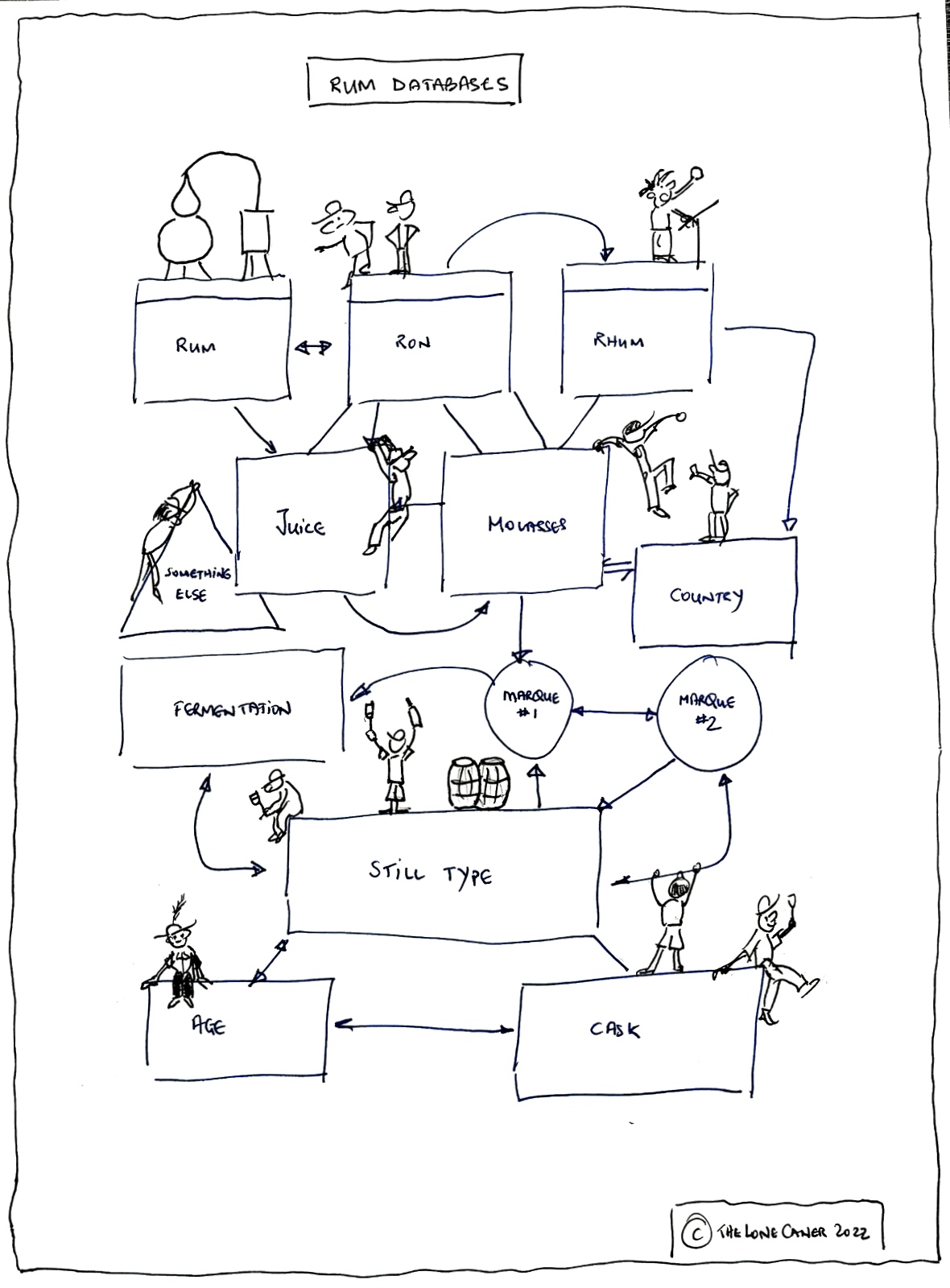
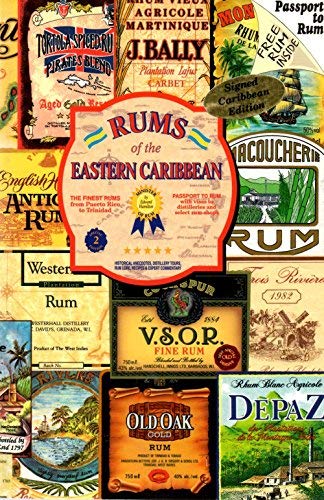
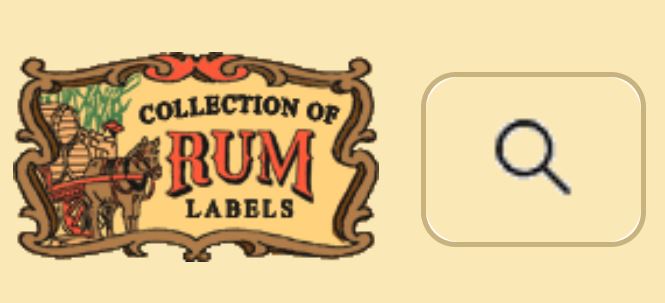
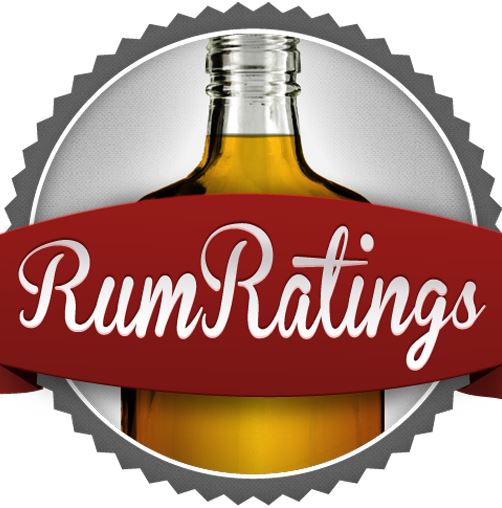
Capn Jimbo’s Rum Project was another great resource back in the day
Not for the purposes of this exercise he wasn’t. His “value” if such it could be termed, was always about the forum.
Great idea, but how are you going to describe the rums …..by region, or so-called style ie French or Agricole, Spanish etc or use the newer systems that are being touted that are similar to that used for Whisky….ie pot or column etc, single estate, blended etc
That’s a classification issue, not one of having a generalized database. I consider any database as one that simply lists rums, who makes them, where, from what, how long aged, with what still, and so on…the objective facts. They issue of classification is part of that, since one has to filter and group the database at some stage, but is a second order aspect to this essay’s theme. The topic of classification is so complex and so large that it’s best treated separately, and it’s another piece I’m giving serious thought to.
To shed some more light on Reference-Rhum, we were a handful behind Julien (the founder and owner). And it’s true, at some point, we were all lacking time to support and make the site grow and evolve.
The end was a mix of things : one being some legal complications due to contents taken from commercial sites, a few technical issues and Julien’s personal life.
Sounds amazing but definitely difficult due to the difference in style, freedom of rum, and lack of guidance and regulations internationally. Also, rum hybrids are a new genre that will have huge development and interest in the rum world internationally… Interesting though
I think Velier’s Rumbase is also a good recent attempt. It leans into being an auction results database but it’s good information nonetheless
It doesnt just “lean towards” — it is completely focused on auctions. I noted it and thought of giving it a mention but its limited focus made it of specialisst value not general applicability, and so I desisted. Still, others may disagree so here is the link to it.